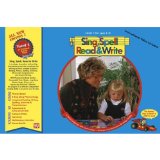Homeschooling In Modern World Of Today
In recent decades, homeschooling, or the traditional practice of educating children within the home as against sending them to a public or private learning institution, is slowly making its way back to the educational mainstream.
This alternative means of elementary and high school education dates back to 1906 in the United States when the Calvert Day School in Baltimore, Maryland offered the “curriculum in a box” partnered with a National Geographic advertisement. Shortly after its fifth year, almost 300 children employed Calvert’s instructional materials for homeschooling. Almost a century later, this method, alongside many other methods and materials developed, spread like wild fire not only within the U.S. but also to 90 other countries all over the globe.
Notable home-schooled personalities include, Thomas Edison, Albert Einstein, Benjamin Franklin, Dakota Fanning (famous Hollywood child actress), Christopher Paolini (book author), Sho Timothy Yano (an American boy of prodigious intelligence), Lynx and Lamb Gaede (the girls of Prussian Blue).
Through history, the methodology with which homeschooling is carried out have proven to be effective. However, as times change, so do the needs and requirements of the learners change. With this, certain modifications are required of the conventional homeschooling methods. Something more stimulating, more motivating, and worthwhile to encourage today’s children to learn and explore.
Looking through the vast resources available on the world wide web under the subject of home-schooling, it could be seen that there has been so much improvement on how homeschooling is done through its century long history. From the crude and very simple methods and materials, new ones that are more sophisticated and complex have become available.
Fresh ideas are readily offered on how lessons should be planned for children of varying ages. Suggestions for fun activities are also presented to always keep the homeschooling atmosphere exciting and something to be looked forward to by the children. It is understandable that kids have shorter attention spans that may usually be a deterrent in keeping their interest in sitting down and listening to a lesson. Taking this into consideration, doing fieldtrips to museums, libraries, even zoos might just do the trick for the little tykes.
In general, the conventional methods and techniques of homeschool need not always be applicable to all settings and apt for each child. Modifying these conventional methods by throwing in some fresh ideas for exercises and activities in such a way that suits the learner’s needs the best should always be regarded.









